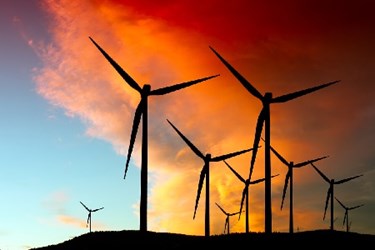Mars And Grupo Bimbo Among Food Manufacturers Harvesting Benefits Of Wind Farm Technology
By Karla Paris

Use of renewable energy aids in fulfillment of manufacturers’ economic and environmental objectives
The potential benefits of wind energy are immense, and experts suggest wind power can easily supply more than 20 percent of U.S. electricity. While some will argue the pros and cons of wind technology, economic advantages tied to wind farms are hard to dispute. Job creation, lower energy prices, government subsidies, revitalized economies, sustainability goals, and energy price stability are all benefits manufacturers are reaping by harnessing the wind.
In early May, Mars, in partnership with Sumitomo Corporation of Americas, announced an agreement on a new 200MW wind farm that will generate 100 percent of the electricity needs of Mars’ U.S. operations, which is comprised of 70 sites, including 37 factories and 25,000 Associates.
The wind farm, Mesquite Creek Wind, a 118-turbine wind farm, was jointly developed by Sumitomo and BNB Renewable Energy and is based near the rural city of Lamesa, TX with a footprint of 25,000 acres. With an annual output of over 800,000 megawatt-hours, the energy created from the wind farm will represent 24 percent of Mars’ total global factory and office carbon footprint – equivalent to the electricity required to power 61,000 U.S. households. This wind farm represents the biggest long-term commitment to renewable energy use of any food manufacturing business in the U.S.
Energy Efficient Automation Systems: Increase Revenue And Sustainability
Since 2012, Grupo Bimbo has seen huge savings through the company’s Piedra Larga wind farm. With 45 wind farms located in the State of Oaxaca, Mexico, where wind speeds surpass 22 MPH, the farm is perfectly located for significant electric energy returns. Each of the farms wind turbines yield approximately 7,000-8,000 MWh (megawatts per hour) each year.
The energy generated is transferred to the farm’s own substation through a transmission pipeline and then sent on to the Federal Power Company of Ixtepec, Oaxaca substation where it is sent to final users for consumption — more than 100 of the company’s facilities in Mexico.
Both Grupo Bimbo’s Sales Center and the electric motor vehicles used at the Sales Center are powered by the energy generated in the Piedra Larga wind farm, greatly reducing the expense for fleet fueling. Since its opening, sixteen months ago, Piedra Larga has prevented the emission of nearly 176 thousand tons of CO2. This amount is equivalent to the absorption capacity of five times the area of the Mexican National Park “La Marquesa,” located in the state of Mexico, or the annual consumption of electric energy of the metropolitan area of the city of San Luis Potosí, correspondent to 280 thousand homes of four-member families.
In May, Stafford County Flour Mills Co. began installing a wind turbine, a move that would make it the first commercial flour mill in North America to use wind power generated electricity produced on-site. The installation of a wind turbine allows Stafford County Flour Mills to offset retail energy rates and lower carbon emissions.
“Stafford County Flour Mills physically sits in one of the best wind corridors in the United States and so it was only natural that we seek an opportunity to procure our energy responsibly and reduce our dependence on non-renewable energy while fixing one of our key input costs in flour milling,” says Reuel Foote, president of Stafford County Flour Mills.
